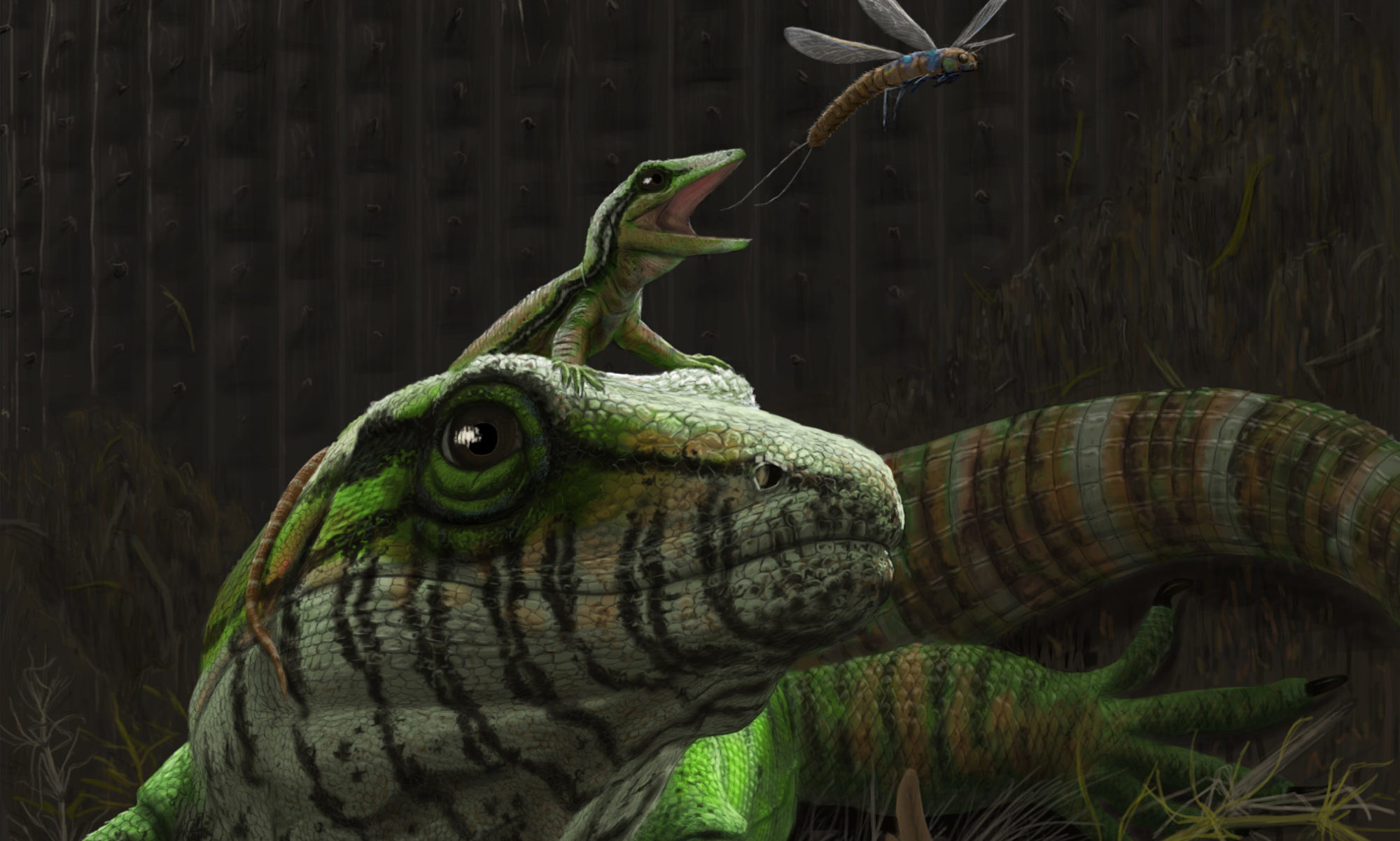While re-examining the early reptile Cephalerpeton, PhD student Arjan Mann, working with two awesome undergrads, discovered another animal among the material. Several features indicate this new animal is a parareptile – a likely extinct lineage of reptiles that radiated in the Permian. The new animal, named Carbonodraco by Emily and Emily, lived in the Carboniferous. This new earliest record of the group adds a whole new taxonomic component to Carboniferous communities, and reveals amniotes were radiating much more rapidly than previously thought.
CBC story can be found at: https://www.cbc.ca/news/technology/carbonodraco-fossil-1.5394231?__vfz=medium%3Dsharebar
Banner art by Henry Sharpe.

























